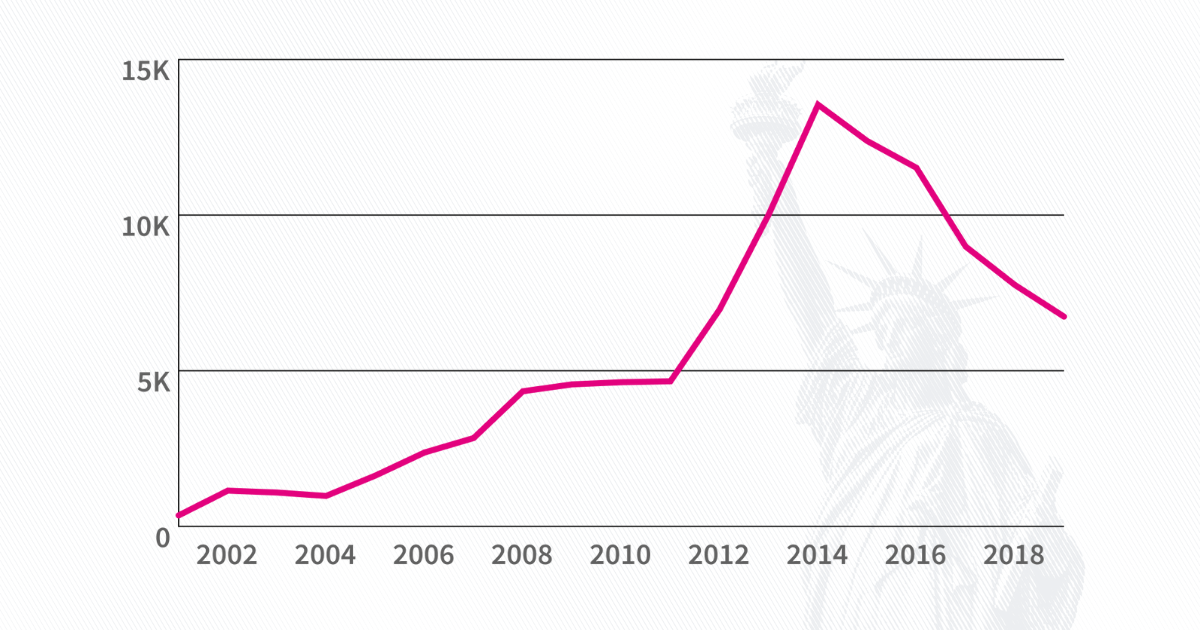Defense and security
How many refugees are entering the US?

A recently released report from the US intelligence community provided some of the first official public information on unidentified aerial phenomena (UAP) witnessed by military personnel. The report, issued by the Department of Defense Unidentified Aerial Phenomena Task Force, cited 144 reports of UAP between 2004 and 2021.
Each UAP sighting could be categorized in one of five ways:
Only one of the 144 sightings was categorized: a large deflating balloon coded as airborne clutter.
Out of the 144 UAP reports, observers logged 80 reports with multiple sensor observations, 11 reports of near misses, and 21 reports of “unusual flight characteristics.”
Observations noted 18 unidentified flying objects with advanced aerospace capabilities. These include emitting radio signals, remaining stationary in or moving against the wind, and maneuvering suddenly or quickly, “without discernable means of propulsion.”
The Office of the Director of National Intelligence was required by the Intelligence Authorization Act of Fiscal Year 2021 to publish an unclassified assessment of the threat of UAPs. A longer, classified version of the report was provided to members of Congress.
The military previously collected and analyzed UAP sightings but did not share this information with the public.
The Navy established a reporting system in March 2019, and the Air Force adopted it November 2020. Prior to March 2019, many UAP events were not recorded due to the stigma of reporting UAP sightings, technical challenges, or a lack of knowledge of how to report them. Most reports described UAP as objects that interrupted pre-planned training or other military activity, resulting in a collection bias around training and testing grounds and a bias against reporting events that could prematurely end a military exercise.
The Unidentified Aerial Phenomena Task Force was unable to confirm that American or foreign classified projects accounted for any of the UAP reports. Possible explanations the report lists for the observations include the above categories, in addition to sensor errors, spoofing, or observer misperception. The task force plans to continue analyzing the report data.
The report recommends improving reporting, analysis, and funding. Plans include allowing a broader swath of government personnel to submit reports, working with other agencies, especially the Federal Aviation Administration and Intelligence Community, and collecting data in the most likely areas to encounter UAP, like through the Air Force’s November 2020 six-month pilot. Experts will conduct an in-depth analysis of the new data, as well as any historical information. The report also recommends more funding to better understand these unusual occurrences.
Learn more from USAFacts and get the data directly in your inbox by signing up for our newsletter.
Defense and security
Defense and security
Defense and security
Defense and security
Newsletter
Keep up with the latest data and most popular content.


